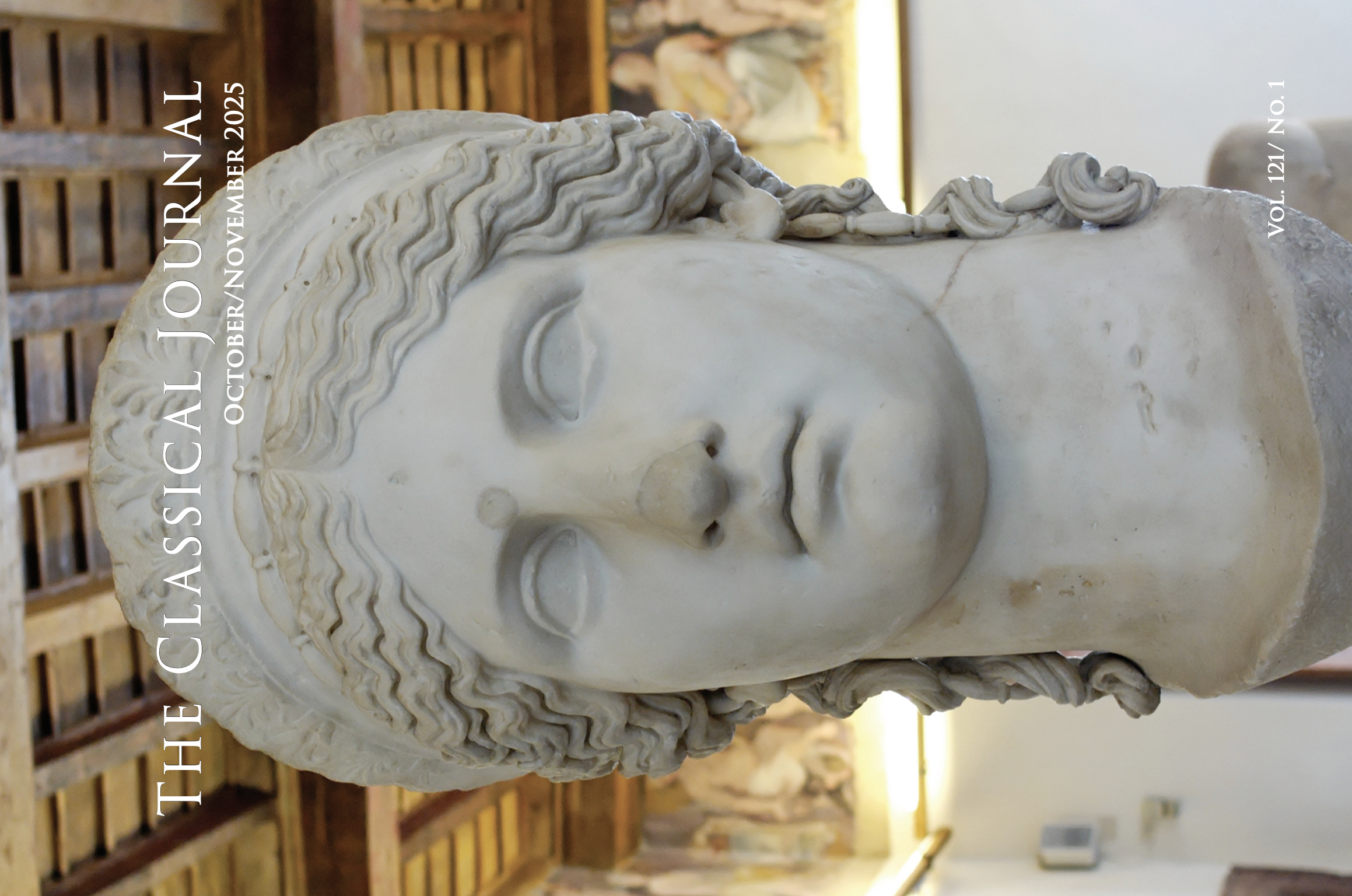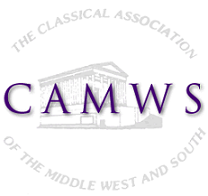The following articles are contained in CJ
116.4
Abstracts of Articles
ENTANGLEMENT AT THE ASSINARUS: DESTRUCTIVE LIQUIDS AND FLUID ATHENIANS IN THUCYDIDES
Thucydides depicts the flow of the Assinarus River entangling desperate Athenians (Th. 7.84). This envelopment caps two interrelated themes that have been developed throughout Thucydides’ History: the destructiveness of liquids and the Athenians’ increasing fluidity. Two earlier scenes, the Battle of Prosopitis (Th. 1.109) and the plague narrative (Th. 2.48–54), showcase these themes and foreshadow the Battle at the Assinarus. Thucydides’ Assinarus draws from Homer’s Scamander and various Herodotean rivers, tapping into a long tradition of destructive liquidity. Together these themes undermine the argument that Thucydides supports Athenian naval imperialism.
HOMER’S LITAI: FIGURATIVE OR LITERAL? HERACLITUS THE ALLEGORIST AND CLEMENT OF ALEXANDRIA
The purpose of the present paper is to examine two diametrically opposed interpretations of the Homeric Prayers that were put forward by Heraclitus the Allegorist and Clement of Alexandria. This article shows that these divergent (figurative vs literal) interpretations reflect not only the conflicting interests of their authors (the glorification of Homer vs the glorification of Christianity) but also a significant difference between a pagan (polytheistic) and a Christian (monotheistic) attitude to the literal-figurative dimension of personifications.
CALLIMACHEAN ECHOES IN OPPIAN, HALIEUTICA 1.80–92*
This paper explores the significance of Oppian’s engagement with Callimachus (Hymn to Zeus and Epigram 1) in Halieutica 1.80–92. Both Callimachean allusions operate on two levels: (i) Oppian alludes to a specific phrase or set of phrases found in the Hellenistic poet; and (ii) he engages with linguistic or philological debates just as his Hellenistic predecessor. These allusions, furthermore, contribute to the exploration of profound epistemological questions that lie at the heart of Hal. 1.80–92.
MASCULINITY AND LITERATURE IN PERSIUS’ FIRST SATIRE: THE CASE OF SOME DOUBLE ENTENDRES
In this article I examine certain cases of sexual double entendre in Persius’ first satire which so far have essentially escaped the attention of scholars. I focus on their potential to illuminate aspects of his satiric persona and poetics, of his contribution to the evolution of the satiric genre, of his agenda as a poet and of the literary trends of his day. I argue that with doubly-intending word play, the satirist criticises the extensive generic enrichment that dominates the poetry of his time, redefines the notion of literary virility by dissociating it from the size of a poem and suggesting other criteria of masculinity and artfully promotes his own work and his originality.
SERTORIUS, CIVILIS, ROME AND EXILE IN TACITUS’ HISTORIES
Tacitus invokes the tradition of Quintus Sertorius in his Batavian Revolt narrative to question assumptions about Rome’s political and moral authority, especially in civil war. Sertorius and Julius Civilis each aspired to a western empire to rival Rome; these rival empires raise the possibility that alternatives could exist, but undercut that possibility with their failure. The allusion to Sertorius, an exilic figure, also connects the Histories with the discourse of exile in the Annals, in which several of Tacitus’ characters grapple with the destabilization of Rome’s identity as not only a political but also a moral center.


